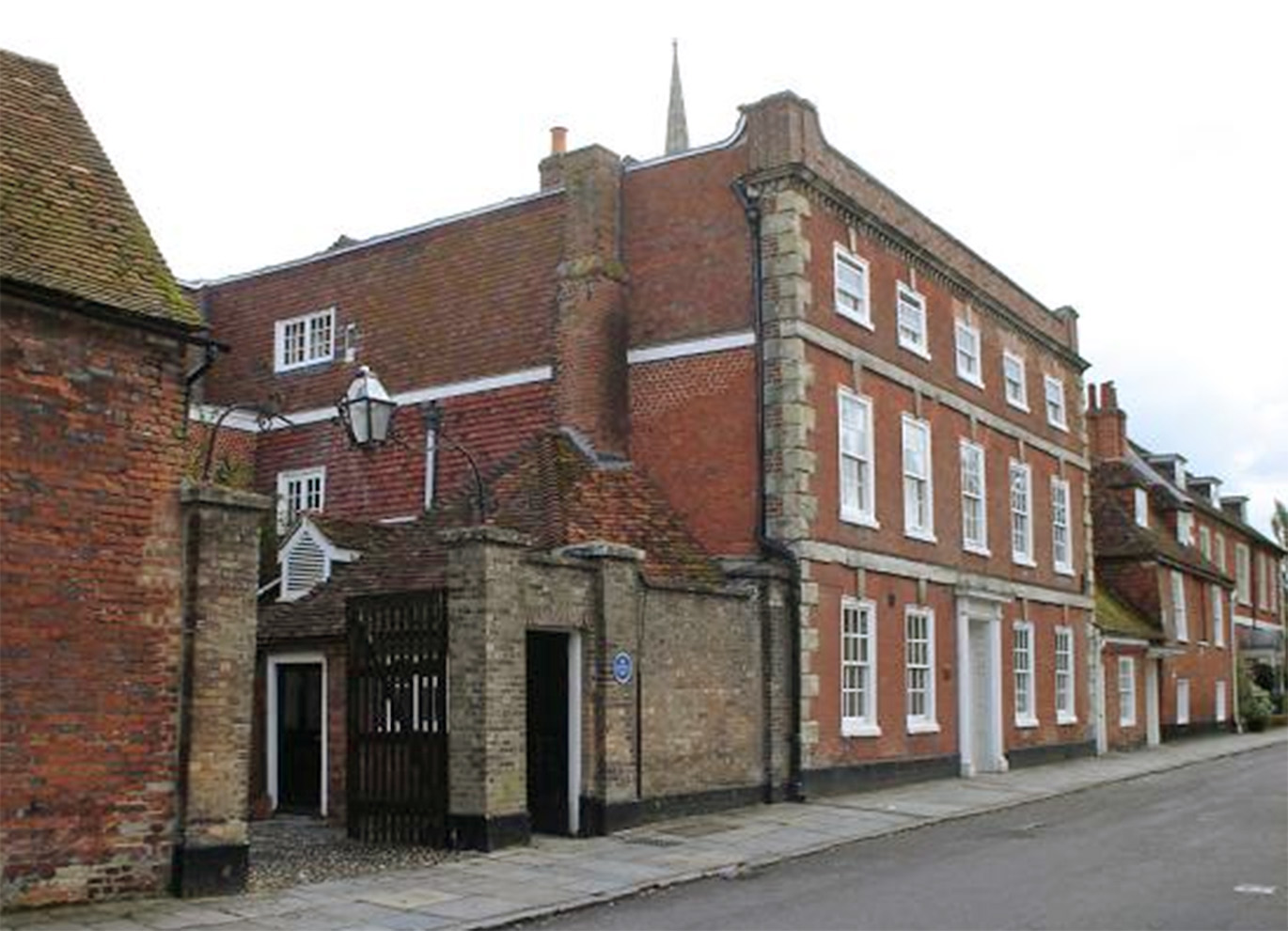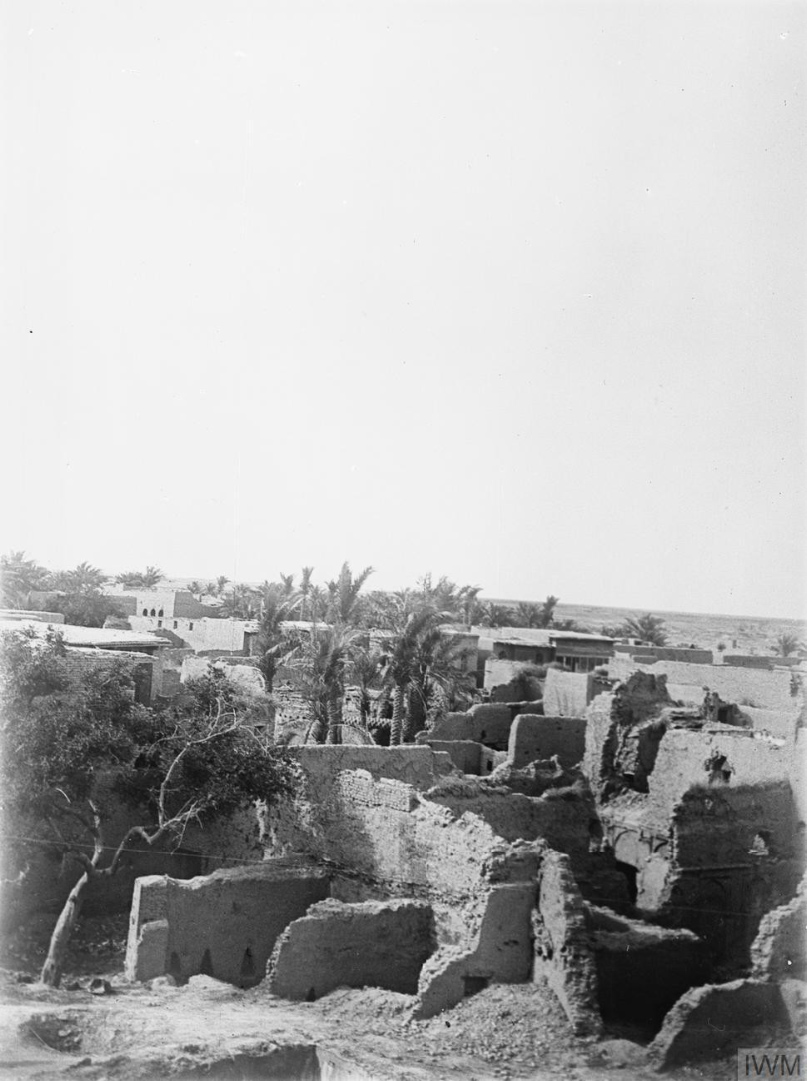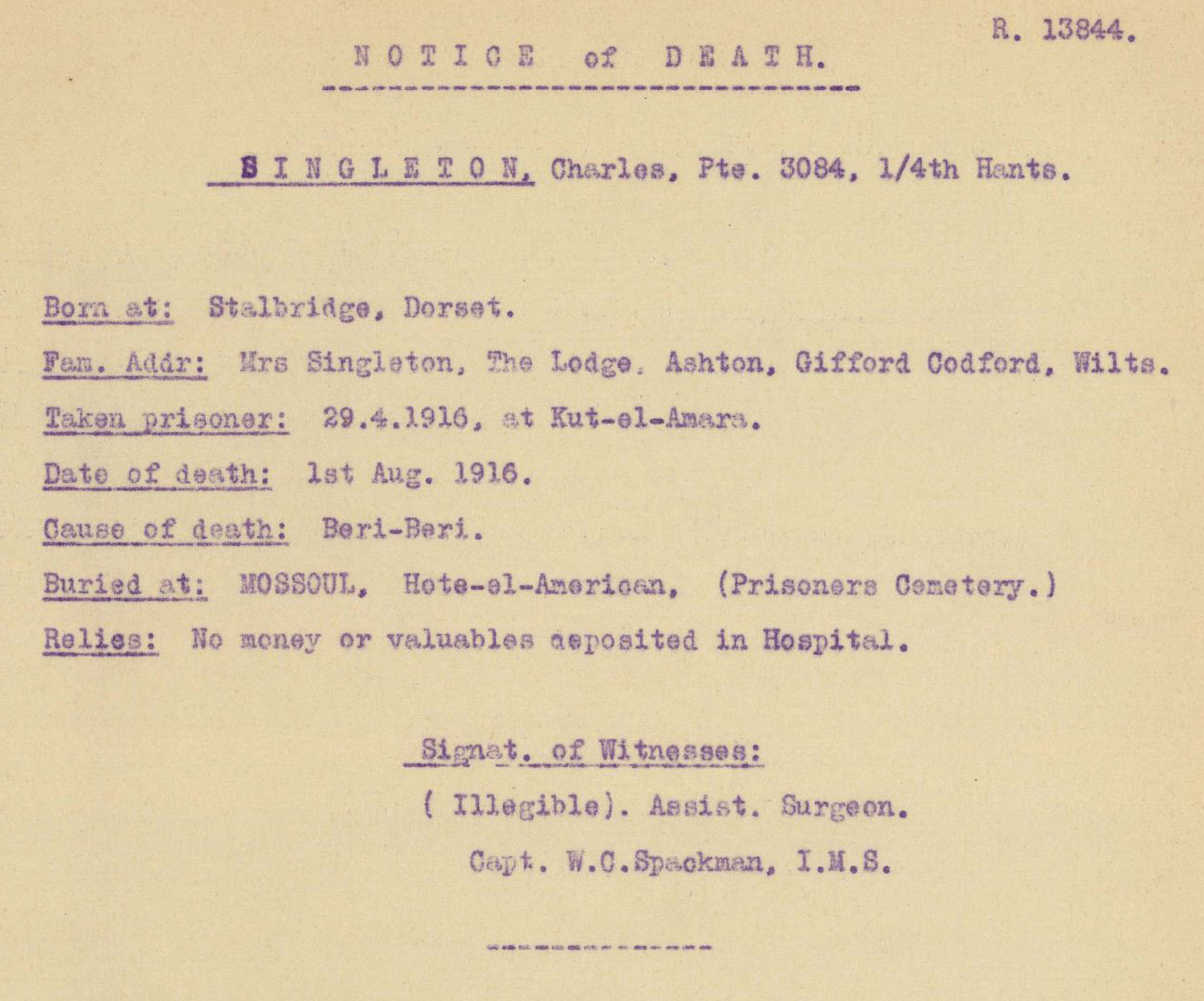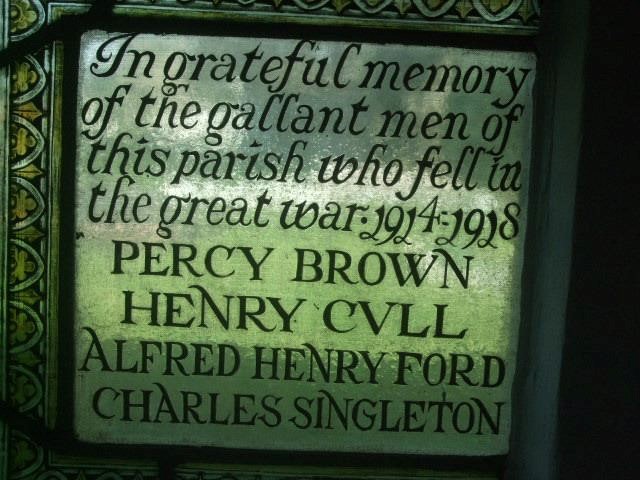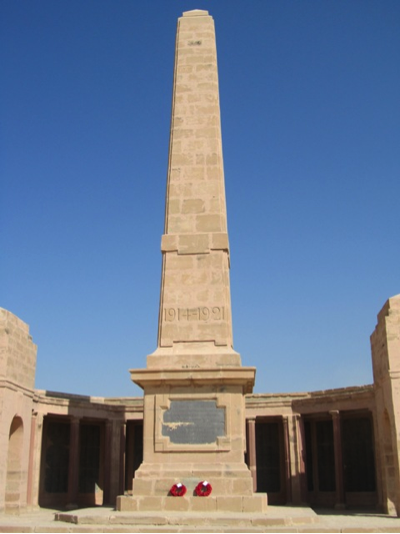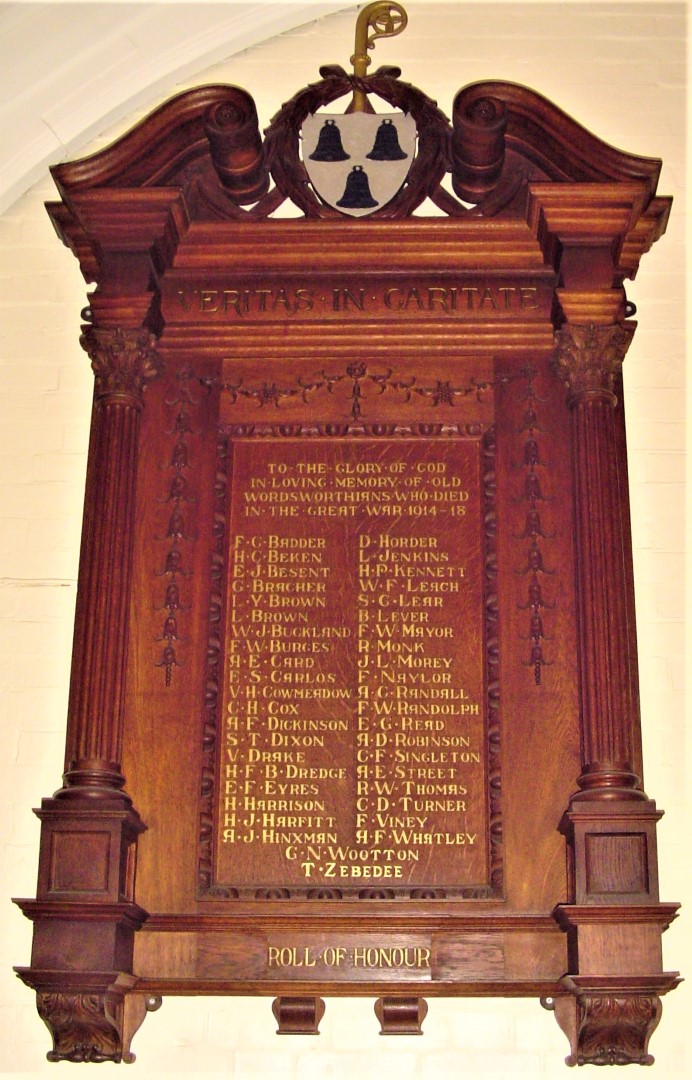Charles Frank Singleton
Private Charles Frank Singleton of the 1/4th Hampshire (T.F.) Regiment, Regimental Number 3084, died of illness as a Prisoner of War, in Mosul on 1st August 1916, and is commemorated at Basra.
Family Background
North Lodge was a property belonging to the large and impressive Thornhill Park estate. Thornhill was originally built for Sir James Thornhill who was the father-in-law of William Hogarth. Thomas was not the only gardener employed by the estate. Thornhill Park was owned by Dorothy E Parke, a single woman aged 24. Her father Sir William Alcock Whitbeck Parke had died in Stalbridge in 1897 and her mother Ann had died in 1900 leaving Dorothy with a large estate. Thornhill Park employed a butler, a cook, a ladies maid, 2 housemaids, 2 footmen, a scullery maid, 2 gardeners, a groom and 2 agricultural labourers.
Training to Teach
With the closure of the Winchester premises, most of the September 1914 intake were diverted to Exeter Diocesan College, which remained open for a further year. They were still registered as Winchester students and under the care of the Winchester staff, but Charles was not listed among them. Although his enrolment signature appears in the Winchester Students’ Register, we also find a short section of the register which gives a list of Men who should have come into residence Sept. 1914, but who, being territorials, were under arms. Juniors, Sept. 1914: Williams, Preece, Singleton C.F.1
The next mention of him is from the Army’s Medal Index Card where he is recorded as entering the Asiatic Theatre of War on 18th October, 1915.
Mesopotamia
Advances were made and the Turks were defeated at Qurna and Shaiba, then onto Ahwaz and Amara and then to Nasiriya. The first of the Winchester Training College men in the 1/4th Hants, Godfrey Wootton, lost his life at Nasiriya. From Nasiriya they moved to Kut-al-Amara and despite doubts expressed by Major-General Townshend, it was decided to continue the advance to Ctesiphon. Throughout the advance the strategic planning and logistical support was woefully inadequate, and the strength and ability of the Turkish Army had also been consistently under-estimated. At Ctesiphon the battle did not go to plan for either side. The Turks suffered heavy losses and the Allied Force failed to gain ground. Townshend’s troops retreated to Kut, pursued by the Turks. Once back at Kut, where supplies had been stockpiled for the proposed advance on Baghdad, Major-General Townshend decided to make a stand, believing that they would receive support within two weeks.
From the 7th December 1915 until 29th April 1916 Charles, along with the rest of the Allied Force under Townshend, and thousands of civilians, were besieged by the Turkish Army, at Kut-al-Amara.
Kut-al-Amara from the roof of Major-General Townshend’s house. ©IWM Q27305
Despite their initial hopes the relief force never got through to Kut. Those besieged in the town endured considerable hardships. They were under attack from the Turkish army, they had to deal with appalling physical conditions caused both by the weather and by myriads of pests. They were weakened by diseases and by starvation. Once surrender came their situation grew worse, particularly for the other ranks.
The march into captivity, across inhospitable terrain, when the men were starving and many were suffering from disease, would have been hard enough but add into the mix insufficient food and water and inhumane treatment from many of the guards assigned to accompany them, and it is not difficult to see why so many men died before reaching their destinations. The men were first marched to Baghdad and from there north towards Mosul and onto destinations in Iraq and Turkey.
On 6th May, and with extreme cruelty, the death march of the British and Indian prisoners began, the first party staggering into Baghdad on 27th May. Some remained, too weak or ill to move further; the majority were to be pushed on to PoW camps in Anatolia. By 2p.m. on 6th May, over 300 men had already died and all the remainder were formed up ready to leave camp to begin an atrocious march up river to a Baghdad.
Mrs Bowker, the widow of the C.O. of the 1/4th Hampshires, organised support for the prisoners of war from her home in Hampshire. She found sponsors for each of the captive men so that parcels of essential clothing and the occasional treat could be provided. In Mrs Bowker’s Fund Ledger it shows that Charles was sponsored by W. Harefield of Vine Cottage, Tichbourne, Alresford, Hampshire. It is unlikely that Charles was ever a recipient of one of these parcels before he died.
On 23rd May around 3,000 British and Indians, set off towards Mosul, via Tikrit. They were escorted by Arab guards, who were not averse to using brutal methods to keep their prisoners marching. Many fell by the wayside, some murdered, others abandoned to their fate. The first men reached Mosul on 3rd June, others straggling in over the next few days.
The march of the other ranks reached Mosul in June 1916. William Leach, another Winchester alumni who kept a diary of the march and his time as a P.O.W., wrote that Charles was left behind in hospital when they marched onwards from Mosul. The men who were very sick had also been left behind in hospitals at previous towns that they had passed through. The death notice signed by Colonel William Spackman gives Charles’ cause of death as beriberi. 1 According to the memoirs of Colonel Spackman, a Regimental Medical Officer captured at Kut and a prisoner in Mosul during August 1916, there were many deaths there: I lost nearly 100 British soldiers in that melancholy hospital in a period of a few weeks that summer. I had them all buried by a local priest of the Greek Orthodox Church at a place called The Hote el Americaine, a bare hillside two miles south-west of Mosul and I put up two memorial stones and filled in the official acte de deces’ for each man. After the war, this cemetery was found with its marking stones by the British War Graves Commission who had it properly fenced in and arranged for its maintenance.
Cause of death in Col. Spackman’s report, in the PoW records of the International Committee of the Red Cross. Copyright ICRC.
SINGLETON- Aug 1st, at Mossoul, Asia Minor, Private Charles Frank Singleton, aged 20, youngest and dearly beloved son of Mr and Mrs F.E. Singleton, The Lodge, Ashton Gifford, Codford, Wilts. Taken prisoner at Kut-el-Amara. Interred in the Prisoners’ Cemetery at Mossoul.
He is also remembered in St. Peter’s Church at Codford , Wiltshire and Bishop Wordsworth School in Salisbury.
Researcher and Author: Dee Sayers
Footnotes
[2] Beriberi is caused by Vitamin B1 (Thiamin) deficiency. It can take one of two forms “ wet beriberi which affects the heart and circulatory system and can lead to heart failure, or dry beriberi which affects the nervous system, causing weakening of the muscles and eventually leading to paralysis.
Sources
Alwyn Ladell photography. (2018). Home page. [online] Available at: https://www.flickr.com/photos/alwyn_ladell/sets/72157665876163520/ [Accessed 2018].
Ancestry (2018). Home page. [online] Available at: www.ancestry.co.uk [Accessed 2018].
Bishop Wordsworth’s School (2018). BWS “ 126 Years of history in one webpage. [online] Available at: http://www.bws-school.org.uk/The_School/History/[Accessed 2018].
Crowley, P. (2016). Kut 1916: the forgotten British disaster in Iraq. Stroud: The History Press.
Commonwealth War Graves Commission, (2018). Home page. [online] Available at www.cwgc.org/ [Accessed 2018].
Fibis (2018). Prisoners of the Turks (First World War. [online] Available at: https://wiki.fibis.org/w/Prisoners_of_the_Turks_(First_World_War) [Accessed 2018].
Great War Forum (2016). Taken prisoner relieving Kut and died either Turkey or at Mosul, Post #2 [online] Available at: http://1914-1918.invisionzone.com/forums/topic/246100-taken-prisoner-relieving-kut-and-died-either-in-turkey-or-at-mosul/?tab=comments#comment-2477912 [Accessed 2018].
Imperial War Museums. (2019). IWM Photograph. [online] Available at: https://www.iwm.org.uk/collections/item/object/205268477 [Accessed 6 Jun. 2019].
Sedgewick, C. (2015). Charles Frank Singleton [PDF]. Wiltshire: Wiltshire OPC Project. [online] Available at: http://www.wiltshire-opc.org.uk/Items/Codford/Codford%20-%20Charles%20Frank%20Singleton%20-%20Roll%20of%20Honour%20St.%20Peter’s.pdf [Accessed 2018].
Vickers, J. University of Winchester Chapel Memorial Rail image.
Wellcome Collection (2018). The Exeter Diocesan Training College. Wood engraving by W.E. Hodgkin after R. Barrow after J. Hayward. [online] Available at: https://wellcomecollection.org/works/p3hgqd3x [Accessed 2018].
The William Leach Collection (Various). Records of RSM W.F. Leach including the records of Mrs. E. Bowker [documents, notebooks, photographs and artefacts] The Royal Hampshire Regimental Museum, Winchester.
Winkleighonline.com. (2019). The Campaign in Mesopotamia. [online] Available at: https://winkleighonline.com/wmc/level3/kut.htm [Accessed 8 Jul. 2019].
With special thanks to “Charlie962” of The Great War Forum for additional information.
| University of Winchester Archive “ Hampshire Record Office | ||
| Reference code | Record | |
| 47M91W/ | P2/4 | The Wintonian 1899-1900 |
| 47M91W/ | P2/5 | The Wintonian 1901-1902 |
| 47M91W/ | P2/6 | The Wintonian 1903-1904 |
| 47M91W/ | P2/7 | The Wintonian 1904-1906 |
| 47M91W/ | P2/8 | The Wintonian 1905-1907 |
| 47M91W/ | P2/10 | The Wintonian 1908-1910 |
| 47M91W/ | P2/11 | The Wintonian 1910-1914 |
| 47M91W/ | P2/12 | The Wintonian 1920-1925 |
| 47M91W/ | D1/2 | The Student Register |
| 47M91W/ | S5//5/10 | Photograph of 5 alumni in Mesopotamia |
| 47M91W/ | Q3/6 | A Khaki Diary |
| 47M91W/ | B1/2 | Reports of Training College 1913-1914 |
| 47M91W/ | Q1/5 | Report and Balance Sheets 1904- 1949 |
| 47M91W/ | R2/5 | History of the Volunteers Company 1910 |
| 47M91W/ | L1/2 | College Rules 1920 |
| Hampshire Record Office archive | ||
| 71M88W/6 | List of Prisoners at Kut | |
| 55M81W/PJ1 | Managers’ Minute Book 1876-1903 | |
| All material referenced as 47M91W/ is the copyright of The University of Winchester. Permission to reproduce photographs and other material for this narrative has been agreed by the University and Hampshire Record Office. | ||


